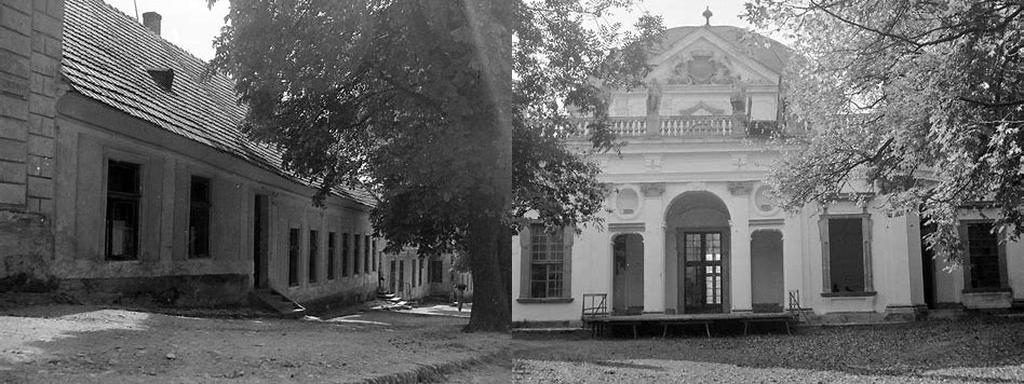
Zalay-kúria in Legyesbénye is not the kind of mansion that shouts for attention from the hills of northern Hungary. It sits quietly, almost bashful, on the edge of this Tokaj foothills village, a little off the route most wine tourists would normally take. Yet—precisely because it has managed to escape the crowds—it offers a unique and surprisingly intimate encounter with both local history and Hungarian architectural taste from the late 18th and early 19th centuries. Once you leave the main road and take the winding street lined with walnut trees, you will find yourself standing before an unpretentious, pastel-colored manor house, its simple elegance telling stories older than many famous city palaces.
Let’s start with the building itself. The mansion was constructed in the late 1700s, likely around 1790, although no one pretends the stones themselves will confess the precise date. Its creator was the Zalay family, who by all accounts managed substantial stretches of vineyards and farmland in the area. Unlike the extravagant Habsburg residences, the Zalay’s home communicates a different aesthetic—one grounded in rural adaptation and understated comfort. The U-shaped plan of the Zalay-kúria reflects the manor houses of this northern Tokaj region: thick whitewashed walls keep the temperatures stable, broad tiled roofs shelter against spring storms, and shuttered windows reflect the filtered light of long summer afternoons. All of it laid out in what the guidebook might call Neo-Classical, but which the local storks—perched on their chimney nests—clearly consider the very model of home.
It is the details that make the mansion so memorable. Step under the columned portico, and you notice the hand-carved capitals, each one just a touch uneven, as if the mason was distracted by birdsong. In the salon, the wood-beamed ceiling and creaking floorboards still hold the scent of old Tokaj casks. Unlike the grandeur of Eszterházy or Gödöllő, here you feel the passage of generations: the patina on the bannister, the faded border of family portraits, and sometimes, on quiet mornings, the echo of old laughter in an empty corridor. Outside, the garden (never precisely formal, but always deeply atmospheric) still hints at orchard rows and the stray rose bush a great-aunt may have planted two centuries ago. Today, the grounds bloom with wildflowers and fruit trees, and in autumn, the grapes are gathered as they have been since before Ferenc Rákóczi II marched past these very hills.
Of particular interest is how the Zalay-kúria has connected itself—quietly, steadfastly—to the village around it. Thanks to local initiatives, the mansion has become a space for culture, memory, and shared moments. You won’t find velvet ropes or high walls here. School groups file through its shaded rooms, local artists display watercolors in the main hall, and if you visit in May, you might stumble upon a folk music performance under the linden tree. Each corner carries a subtle reminder that this is a house woven into the fabric of rural life. The people of Legyesbénye still recall family stories—of Christmas feasts laid out in the dining room, diaries jotted in attic nooks, or wartime strains when the mansion served as a hiding place for villagers in 1944. While the house saw many owners during the state-socialist period, its role as a guardian of local memory never quite faded.
What does all this mean for the visitor? Simply that Zalay-kúria offers an encounter that slips outside of the ordinary patterns of “go-see-take a photo-leave.” No pushy docents ushering you along, no carefully repeated script. Instead, time has preserved both the scale of daily life and the dignity of a house that, in its way, has already survived revolutions, occupations, and generations of busy feet. The mansion’s rooms invite you to linger, to imagine a winter fire crackling in the stove, a summer table spread with wine and apricot cakes. The window views—across tangled grapevines that stretch to the slopes of Tokaj—remind you why families like the Zalays made their lives here for centuries: the countryside isn’t dramatic, but it is rich, enduring, and quietly seductive.
In all, a visit to Zalay-kúria in Legyesbénye feels simultaneously like slipping into a photograph and stepping into a living memory. It is a place of gentle ghosts—none of them frightening, but all ready to introduce you to a corner of Hungary less self-important yet, somehow, infinitely warmer. Don’t expect to leave without at least a passing daydream of what it might mean to settle into these rooms yourself, drinking in the patient rhythm of grape harvests and slow evenings. For those willing to wander a little off the main road, quiet treasures like Zalay-kúria offer the richest rewards.





